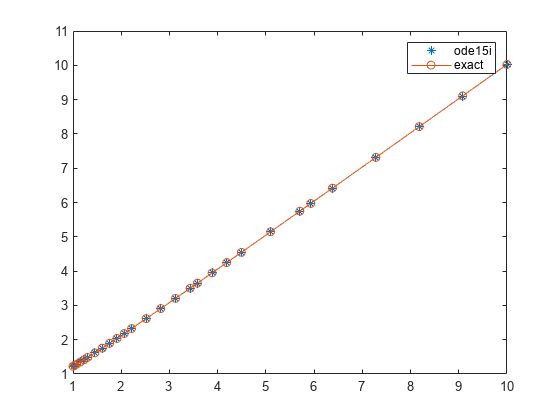decic
为 ode15i 计算一致的初始条件
语法
说明
示例
输入参数
输出参量
提示
在使用
ode15i求解之前,ihb1dae和iburgersode示例文件使用decic计算一致初始条件。可以键入edit ihb1dae或edit iburgersode查看代码。还可以使用
decic计算通过ode15s或ode23t求解的 DAE 的一致初始条件。为此,请按以下步骤操作。采用完全隐式的形式
f(t,y,y') = 0重写方程组。调用
decic计算方程的一致初始条件。指定
y0_new作为调用求解器的初始条件,并指定yp_new作为odeset的InitialSlope选项的值。
版本历史记录
在 R2006a 之前推出
